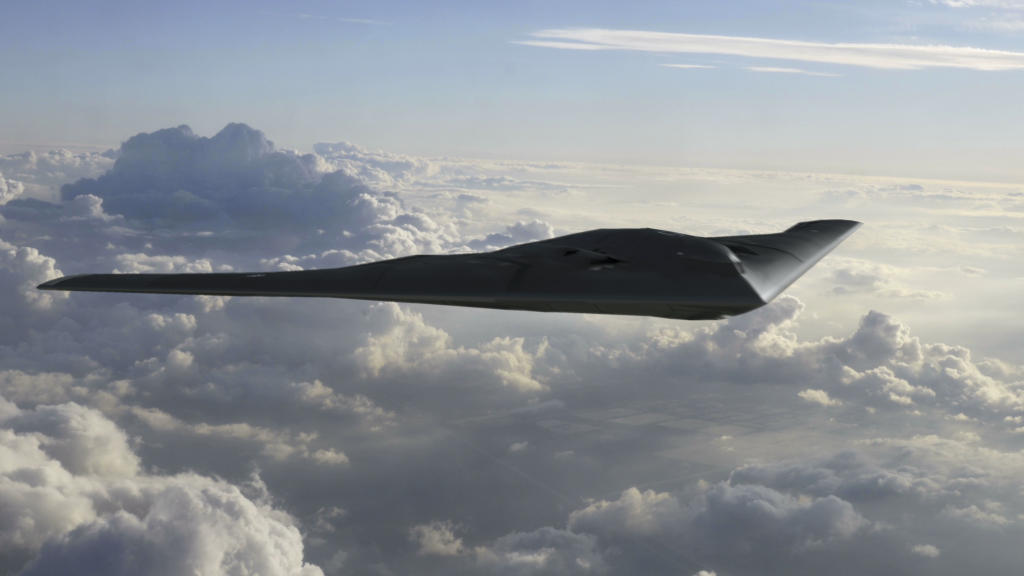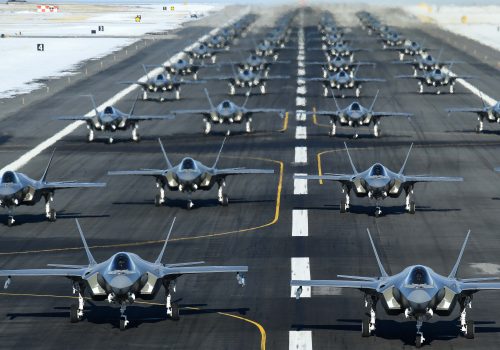August 30, 2022
Commercial satellites are on the front lines of war today. Here’s what this means for the future of warfare.
While the first Gulf War is often characterized as the first space war, the ongoing war in Ukraine may be remembered as “the first commercial imagery conflict.” Commercial space companies are delivering critical capabilities to Ukrainian soldiers and civilians alike, demonstrating that commercial and dual-use satellites can help bolster a country’s national security.
These companies are sharing visuals that only governments were privy to just years ago and, since the war erupted in Ukraine, US and allied governments have doubled down on their purchase of commercial low-Earth orbit (LEO) imagery. Today’s satellites capture details as small as road markers or the quality of muddy terrain (which impacts military planning). Just as air power theorists recognized the value of air weapons following World War I, experts today are realizing the unrivaled advantage offered by commercial satellites. For these reasons, space companies may be viewed as legitimate targets in future wars.
SpaceX’s satellite Internet constellation, Starlink, has proved to be an especially formidable opponent for Moscow, due to both its unprecedented speed of deployment and its continued resilience against attack. A few days after Russia invaded Ukraine, the Ukrainian vice prime minister, Yulia Svyrydenko, used Twitter to urge SpaceX founder Elon Musk to supply satellite Internet to Ukraine. Within hours, Musk tweeted back, “Starlink service is now active in Ukraine. More terminals en route.” Now, eleven thousand Starlink stations are keeping over one-hundred fifty thousand Ukrainians connected to their country and the outside world daily.
Satellites in combat
Satellites support crucially important military operations. The Turkish Bayraktar TB2S, an unmanned aerial vehicle (UAV) critical to denying Russian air superiority, relies on space-to-ground communications to operate in a larger range. The Starlink constellation is especially critical to Ukraine’s ability to execute attacks in geographic areas lacking sufficient infrastructure or Internet connection. Ukrainian drones successfully strike enemy forces, troops send encrypted messages back and forth, and soldiers remain connected to their loved ones with help from Starlink.
Meanwhile, Russia began targeting commercial space companies in the earliest phases of war. When Russia invaded Ukraine, it hacked the US satellite company Viasat, a communications provider for the Ukrainian military, degrading Ukraine’s ability to act on space intelligence. Throughout the war, Moscow has focused its efforts on jamming and degrading critical UAVs and small satellites to conceal its own troop movements. Early in the war, one US company discovered that UAVs in the Luhansk and Donetsk regions of Ukraine were experiencing global positioning system (GPS) jamming by the Russians. However, commercial satellite constellations are quickly adaptable—as was seen when Starlink demonstrated a new software update to lower energy consumption and thus bypass jamming transmitters amid Russian non-kinetic attacks. Commercial satellites bolster US and allied airpower: their agility, coupled with the fact that special overflight permissions do not apply to LEO, means that military officials can rely on satellites for intelligence and situational awareness.
Eyes in the skies
Commercial satellites are also players in the public sphere, denying Moscow’s attempts to alienate Ukraine from the rest of the world. Satellite imagery of bases in ruins, bombed bridges, and the aftermath of missile attacks provide a snapshot of war to a global audience and expose Russian falsehoods and atrocities. Such images can influence public opinion and thus foreign policy—as was seen when commercial imagery uncovered Chinese missile silos last year and North Korean missile facilities in 2019. Additionally, satellites allow Ukrainians to tell their own story. US officials gave Ukrainian President Volodymyr Zelensky a satellite phone to stay connected, and he uses Starlink to give speeches that are accessible worldwide. Satellite Internet allows Ukrainians to communicate with one another and with the outside world, winning a victory against Russia in the information domain.
Don’t shoot the messenger
Commercial satellites have been critical to Ukrainian military and civilian communications throughout the war thus far, and they will probably be targeted on the future battlefield. The United States and its allies and partners must consider the extent to which commercial space may become under threat, as well as the role of governments and militaries in protecting it.
First, as launch costs decrease, the democratization of space means that more nations—both friends and foes—are joining in orbit. Although the sharing of satellite imagery has advanced US and allied interests during the war in Ukraine, this might not be the case with every actor or scenario in the future. US and allied militaries need to consider how much intelligence should be shared in open-source environments and set appropriate standards for commercial space actors—especially pertaining to US companies sharing information with foreign governments.
Second, small-satellite constellations are resilient against anti-satellite (ASAT) weapons: the whole is greater than the sum of its parts, with each individual satellite being less powerful on its own and thus a less-worthy target. Adversaries are adapting their own models in response. While Russia and others have kinetic counterspace capabilities (as was demonstrated by Russia’s ASAT testing last November), non-kinetic counterspace measures (e.g., jamming, electronic warfare, and cyberattacks) are likely to cause the most chaos. Moreover, kinetic ASATs generate space debris, which poses a threat to the sustainability of all LEO operations. Because many nations—including Russia—rely on LEO for national security imperatives, kinetic attacks are mutually destructive and therefore less likely to be undertaken. Currently, there is no clear process for reporting or responding to an anti-satellite attack.
As adversarial targeting of commercial and dual-use satellites becomes commonplace, US and allied militaries need to establish their roles in protecting—and responding to attacks on—commercial space assets. Some officials have recommended that the United States produce a “comprehensive, national space power vision,” articulating the industrial outputs required to maintain the US and allied military edge in space. Although this is a step in the right direction, such a strategy must acknowledge the barriers to public-private space cooperation and consider the ways in which militaries will safeguard commercial satellites with military applications.
Commercial satellites will continue to act as enablers for the warfighter, and US and allied space companies require protection from adversarial attacks. Although Russia’s unsophisticated fleet of satellites poses little challenge today, China’s more advanced and growing counterspace arsenal will prove a threat to the United States’ and allies’ use of space tomorrow. If commercial space remains defenseless, the United States and its allies will have to prepare to fight blindly in future wars.
***
Julia Siegel is an assistant director in the Forward Defense practice of the Atlantic Council’s Scowcroft Center for Strategy and Security.
Read more essays in the series


Forward Defense, housed within the Scowcroft Center for Strategy and Security, generates ideas and connects stakeholders in the defense ecosystem to promote an enduring military advantage for the United States, its allies, and partners. Our work identifies the defense strategies, capabilities, and resources the United States needs to deter and, if necessary, prevail in future conflict.
